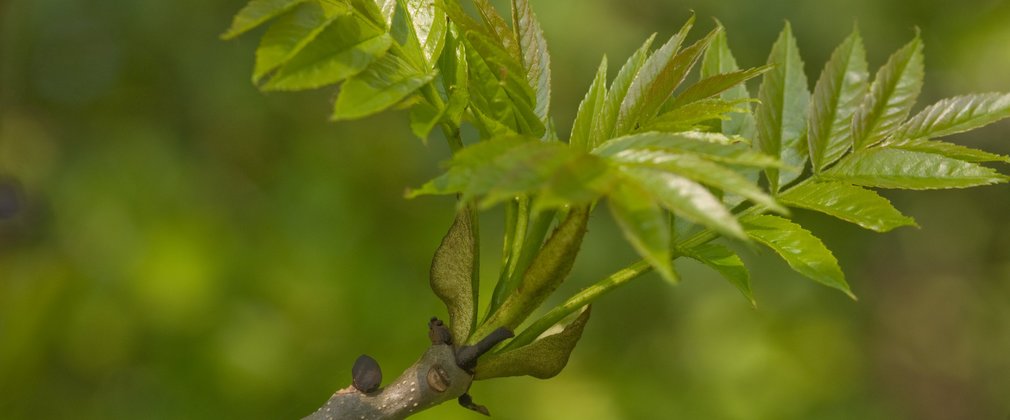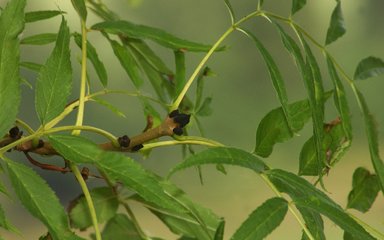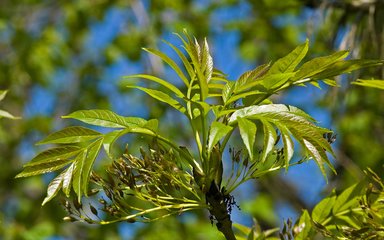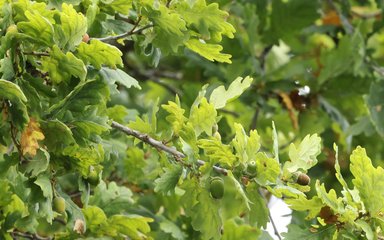
Rooted in mythology with mystical and medicinal properties, ash is a widespread native tree whose wood is a natural shock absorber. Find out more about this tree, from its appearance to its many uses.
Ash facts and figures
- ash (Fraxinus excelsior) have a life span of around 300 years.
- its natural range is Europe, Asia Minor and North Africa.
- these tall, domed trees can reach up to 40 metres in height.
- the ash's winged seeds are known as helicopters because they spin link propellors when they fall.
- ash is one of the last trees to sprout its leaves in the spring.

Ash identification tips
Heading out into the forest? Here are the top things to look out for to help you spot ash:
- leaves: three to six opposite pairs of oval leaves per twig with one leaf at the end.
- twigs: smooth with black leave buds and dense clusters of small, purple flowers.
- seeds: clusters of winged seeds called 'keys'.
- bark: smooth and greenish-grey, turning more grey and fissuring with age.
How ash is used
Ash is widely grown for its durable, flexible and attractive timber. Ash is strong and it takes a very heavy blow for it to shatter, making it ideal for tool handles such as axes and spades. It also makes good oars, flooring, hockey sticks and rackets, alongside skis, coaches, carts and farm implements.
In ancient times ash was thought to have healing powers and its excellent firewood was burnt to drive out evil spirits.

Did you know? In Norse mythology the mighty ash was seen as the tree of life.
Ash and future forestry
Ash dieback is a highly destructive disease of ash trees caused by a fungus that originated from Asia, named Hymenoscyphus fraxineus, also known as ‘chalara’.
It can kill young and coppiced ash trees quickly, with older trees able to resist it for longer. The disease has serious implications for woodland biodiversity due to the number of insects, lichens and mosses dependent on ash as its habitat.
Ash wood is widely used and many industries may need to consider using different hardwoods in future if the disease causes a shortage of suitable timber.
Infected trees can become very dangerous as the branches die, particularly on footpaths and roadsides. Removing trees means we can replant new species resistant to the disease.
However we also continue to manage ash and allow healthy trees to germinate, so that naturally resistant trees can eventually recolonise our woodlands.

